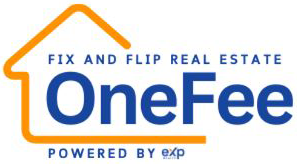Fannie Mae and Freddie Mac: Cornerstones of the U.S. Housing Finance System
Fannie Mae (Federal National Mortgage Association) and Freddie Mac (Federal Home Loan Mortgage Corporation) are pivotal entities in the American housing finance system. Created by Congress, these government-sponsored enterprises (GSEs) ensure liquidity, stability, and affordability in the mortgage market. Let’s delve into their roles, functions, and impact on housing finance.
Key Functions of Fannie Mae and Freddie Mac
- Providing Liquidity to Mortgage Markets
Fannie Mae and Freddie Mac purchase mortgages from banks, savings institutions, and mortgage companies. By doing so, they provide these lenders with cash, which can then be used to issue new loans. This cycle ensures that lenders have the resources to meet the ongoing demand for home loans.
- Packaging Mortgages into Mortgage-Backed Securities (MBS)
The GSEs package the purchased mortgages into mortgage-backed securities (MBS), which are sold to investors. By guaranteeing the principal payment and interest on these securities, Fannie Mae and Freddie Mac attract investors who might not traditionally invest in mortgages. This process:
- Expands the pool of funds available for housing.
- Makes the secondary mortgage market more liquid.
- Lowers interest rates for borrowers.
- Stabilizing the Housing Market
During times of financial turmoil, Fannie Mae and Freddie Mac help stabilize mortgage markets. Their ability to maintain a steady flow of funds ensures that mortgage lending continues, even when broader economic conditions are uncertain.
- Supporting Affordable Housing
Both entities support lending programs that finance affordable housing. By doing so, they reduce the cost of borrowing for families and individuals, ensuring broader access to homeownership and rental housing opportunities.
Historical Background
Fannie Mae
- Established: 1938
- Purpose: To ensure a reliable and affordable supply of mortgage funds across the country during the Great Depression.
- Evolution: Initially a government agency, it transitioned to a shareholder-owned company operating under a congressional charter.
Freddie Mac
- Established: 1970
- Purpose: To provide competition to Fannie Mae and further enhance liquidity and affordability in the mortgage market.
- Evolution: Like Fannie Mae, Freddie Mac operates as a shareholder-owned company under a congressional charter.
How Fannie Mae and Freddie Mac Impact Borrowers
- Lower Interest Rates: By expanding the secondary mortgage market and attracting diverse investors, these GSEs help reduce the cost of borrowing for homeowners and multifamily property investors.
- Increased Loan Availability: Their activities ensure lenders can consistently offer home loans, even during economic downturns.
- Access to Affordable Housing: Fannie Mae and Freddie Mac support programs designed to make homeownership and rental options more affordable for low- and moderate-income families.
Conclusion
Fannie Mae and Freddie Mac play a vital role in ensuring the health and resilience of the U.S. housing market. Through their ability to provide liquidity, stabilize mortgage markets, and support affordable housing, these GSEs enable millions of families and individuals to achieve homeownership or secure rental housing. While they are shareholder-owned companies today, their congressional charters ensure their operations align with public interest goals, reinforcing their importance in the nation’s housing finance system.
Have you Been Pre-Approved for a Mortgage?
Check out our Preferred Vendor Member Lenders Today to get Started!
*Conventional, VA, FHA, DSCR, USDA, Reno, HELOC, DPA, Bridge Loans, Piggy Backs, First-Time Homebuyer, Escrow Hold Back, Creative Financing, Construction Loans, Buy and Hold, Fix and Flip, SDIRA, Residential, Commercial, Short-Term, Long-Term, Owner and Non-Owner, and Interest Only Payments Available depending on the lender*

Need a Stand-Up Property Management Company?
Contact Nick Harris, our Preferred Property Management Vendor-Property Management Company, PURE Property Management of Minnesota!


Need a Quality Realtor? Contact One of Our Preferred Vendor Realtors Today!
OneFee is a specialized division of Clawson Home Group, dedicated to streamlining the listing process for savvy real estate investors. By offering a simplified and efficient approach, OneFee allows investors who are well-versed in the real estate market to save valuable time on selling properties. This enables them to concentrate on expanding their investment portfolios and achieving their financial goals more effectively.
We offer a reduced fee listing package to make your access to the MLS affordable. We start with a package at $3500 to cover all your basic listing needs.
OneFee Realty: Reduced Fees for Flippers (exprealty.com)
Melissa Clawson
(651) 895-0217
melissaclawson@clawsonhomegroup.com

Aaron Rouser with Keller Williams Realty Integrity Lakes
Aaron read Rich Dad Poor Dad back in the summer of 2016 after leaving a corporate job that wasn't for him. Desiring to live a life of abundance and freedom, Aaron has been hooked on all things Real Estate ever since!
Originally from Chicago, Aaron and his wife moved to the Twin Cities in late 2020, and they purchased their first investment property the following year. He's experienced many different strategies of investing such as Wholesaling, rehabbing your residence, managing rentals - Short-term, Medium-term and Long-term, and most notably - House Hacking!
As a licensed realtor at Keller Williams Realty, he's made it his focus and his diverse experience in the investing world toward coaching his clients on acquiring the right investment property for them. Aaron teaches MnREIA’s House-Hacking course each month, and he is always open to consulting with investors - brand new or experienced - to see how he can help add your first or next property to your portfolio.
Aaron's areas of focus as a licensed Realtor include:
- House Hacking - analysis and consultations
- Free investing consultations and advice pre/post-close
- Investment Property Buy & Holds
- Long-Term / Mid-Term / Short-Term Rental Strategies
- First Time Home Buyers
- Move-up Buyers
- Rental Property Analysis
- Property Management – tools and resources
Reach out today for a no-obligation consultation: 312-402-3649!
